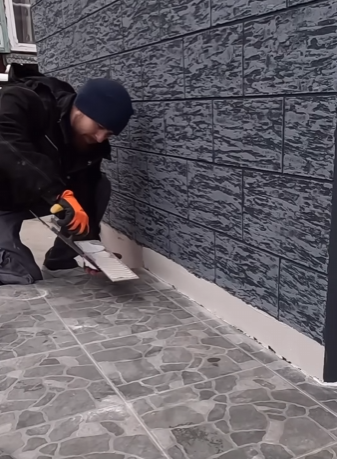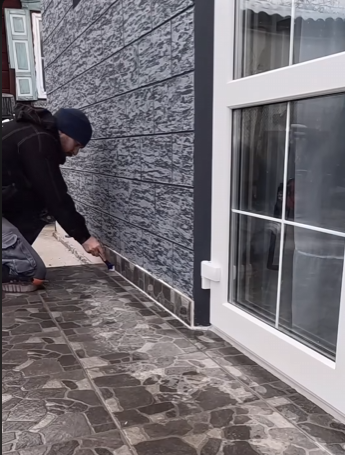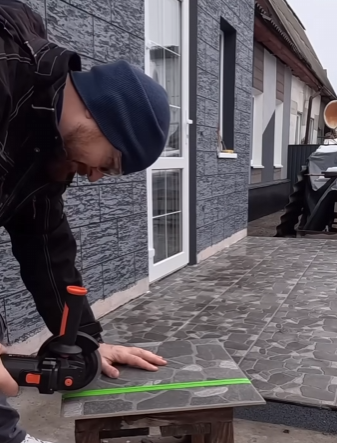
When you hear the phrase “porcelain stoneware boot,” you might pause for a second and wonder: is that a fancy boot made of porcelain? A piece of art? A new type of tile? Or maybe just a strange but creative invention? Well, let’s explore this curious phrase, dig into what porcelain stoneware really is, and how the idea of a “boot” fits into it all.
What is Porcelain Stoneware?
To begin, porcelain stoneware is a type of ceramic material known for its exceptional strength, durability, and resistance to water and stains. It’s made from fine, dense clay fired at extremely high temperatures—often above 1,200°C (2,192°F). The result is a tough, glass-like surface that’s nearly impermeable. It’s widely used in flooring, wall coverings, countertops, and even facades.
But the most intriguing part about porcelain stoneware is how it mimics natural materials like marble, wood, and even metal—without their drawbacks. You get the look of oak, for example, but with the durability of tile. This makes it popular in both residential and commercial spaces.
So, how does a boot come into play?
Is There Such a Thing as a Porcelain Boot?
Porcelain and boots don’t usually go together. Boots are associated with flexibility, outdoor use, ruggedness, and fashion. Porcelain, on the other hand, evokes images of fragility, teacups, and bathroom sinks.
But in recent years, artists and designers have been pushing boundaries by creating fashion sculptures, art pieces, and even furniture using unconventional materials—including porcelain stoneware. So yes, somewhere out there, you may find a porcelain stoneware boot—probably not wearable, but most certainly eye-catching.

The Artistic Side
The porcelain stoneware boot might not be something you’d wear on a hiking trail, but it could easily exist as a decorative or conceptual art piece. Ceramic artists have been known to create everything from handbags to full suits out of porcelain or stoneware for museums or gallery exhibitions. The intention isn’t practicality—it’s often to challenge expectations and explore contrasts.
Imagine a boot that looks like rugged leather but is actually cold, smooth porcelain. It would make you stop, stare, and probably ask, “Why?” But that’s the beauty of art—it doesn’t always need to be useful. It’s there to provoke thought.
Practical Uses: Tile “Boots”?
Now, if we swing the conversation toward practical applications, the phrase might take on a new meaning. In construction and tiling, the word “boot” sometimes refers to curved elements or corner details—especially in plumbing and tiling work.
So a “porcelain stoneware boot” could be a cleverly-named tile corner piece or baseboard designed to fit around curved or awkward angles. These elements are often overlooked, but they play a crucial role in finishing a tiled surface. Made of the same durable porcelain stoneware, these boots help protect corners and edges from chipping and wear.
Designer Footwear Made to Look Like Porcelain
Let’s jump back to fashion. Another possibility? Footwear designers creating boots that mimic the look of porcelain—think white boots with delicate blue floral patterns, inspired by classic Chinese ceramics. Or ultra-modern glossy boots with a stone-like appearance.
This type of design falls in line with the trend of cross-material aesthetics, where items are designed to look like they’re made from one thing (say, porcelain) but are actually crafted from something else entirely (like flexible plastic or leather).
A “porcelain stoneware boot” could very well be a fashion statement—boots that look like tile or porcelain but feel comfy on your feet. Perfect for those who like to walk with style and symbolism.

Porcelain and Industrial Design
Beyond art and fashion, porcelain stoneware has a significant place in industrial design. It’s used in countertops that look like concrete, walls that mimic onyx, and now even custom-fabricated furniture pieces, including seating, tables, and shelving.
Could a boot-shaped stool or planter made from porcelain stoneware be the next hot design item? Very likely. It would be sturdy, weather-resistant, and strikingly unique. Ideal for those who enjoy a whimsical touch in their home or garden.
Symbolism: What Could It Mean?
If we take a step back and look at the phrase symbolically, a porcelain stoneware boot might represent strength in beauty, or beauty in toughness. A boot, typically utilitarian, symbolizes work, movement, resilience. Porcelain stoneware symbolizes refinement, precision, and artistry.
Together, they could be a metaphor for modern design: combining function with elegance. Imagine walking through life in metaphorical boots made of porcelain stoneware—tough enough to handle the journey, but stylish enough to leave an impression.
Modern Marketing and Product Naming
It’s also possible that the phrase is part of modern marketing language, where quirky or creative names are used to catch attention. Just like you might find a paint color named “Elephant Whisper” or “Silent Canyon,” the term “porcelain stoneware boot” could be a product name in a tile catalog—perhaps referring to a small, boot-shaped decorative tile, a footed stand, or a unique bathroom accessory.
After all, marketing loves names that are memorable, even if a bit mysterious. Adding emojis like 🤔☺️ to the name hints that it’s playful or ironic—meant to get you thinking, smiling, or even scratching your head.

Could You Actually Make One?
Yes, you could technically create a real boot out of porcelain stoneware—but it would be more sculpture than footwear. Artists might mold and fire a boot shape in a kiln, finishing it with glazes to resemble real leather. It would likely be hollow, glazed, and beautifully brittle. Displayed on a shelf, not worn on a foot.
In fact, such creations already exist. A quick dive into ceramic art exhibitions or design museums will reveal fashion accessories made entirely from ceramic materials. It’s part of a growing movement that blurs the line between utility and art.
Final Thoughts
The phrase “porcelain stoneware boot” is a delightful blend of the unexpected. It invites us to explore the intersections of material, form, function, and imagination.
Whether it’s a literal sculpture, a clever piece of tile, or a fashion-forward design, the idea encourages curiosity. It reminds us that the world of design is not just about what is, but about what could be—even if it’s as seemingly silly as porcelain shoes.
So next time you hear a strange phrase like this one, embrace the 🤔 and the ☺️. Let your imagination run a little wild. Who knows? Maybe the next great innovation—or art installation—will start with something as quirky as a porcelain stoneware boot.



